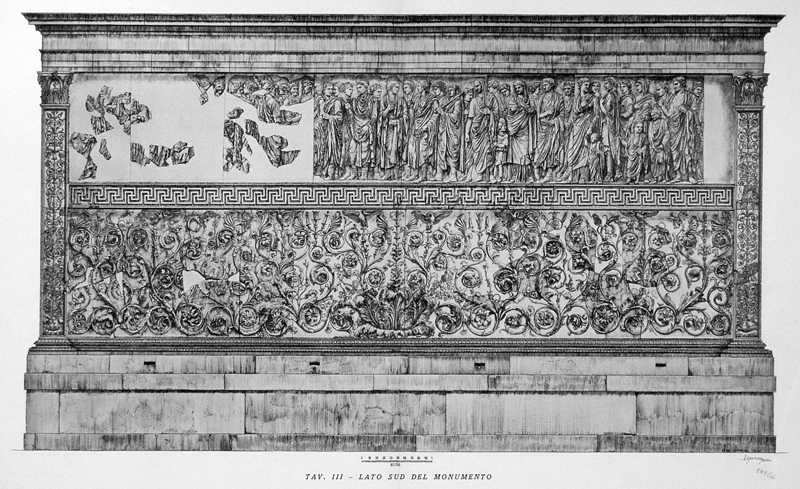The Southern Wall of the Ara Pacis

Depicted here are more members of the imperial family and their servants. The many children represent Augustus' wish for an increase in the birthrate among the upper class. The children were the only way Rome and its power could survive. (Jahnige)
The veiled woman is believed to be Livia who is followed by other members of the imperial family with their children and servants. (Cooley 232-3)
Here Agrippa with his head covered is serving the role of high priest. Next to him is a lictor carrying fasces, as was their function when attending a magistrate in public appearances. (Jahnige) (Cooley 232-3)
This segment shows the priests close behind Augustus. It was their duty to honor the gods at the annual processions. Their presence on the wall helps centralize the idea of the old religion. (Jahnige)
Shown here is Augustus leading the religious procession. This illustrates the importance he attached to the old religion as opposed to Christianity. (Brunt and Moore) It is important to point out that Augustus is not depicted as being above the rest of the procession in the form of a monarch, but rather as an integral part of it. This follows very closely to Augustus' desire not to be seen as potentate but instead as first citizen, which he explains in the Res Gestae.




